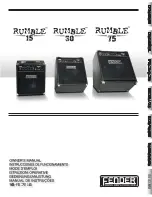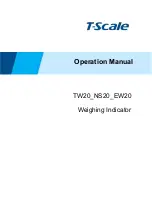
AMI Analyzer Manual
Analyzer Description
26
Gas pressures:
The gas pressure must be at least 0.5psig, and less than 150 psig. If the sample gas is at a higher pressure
than that, a regulator should be used to reduce it to about 20 psig. This will allow the needle valve to give a
good degree of control .
Sensor Installation:
The sensor is supplied sealed in a barrier bag. When you are ready to place it in the analyzer, open the bag
and rapidly place the sensor in its compartment, sensing side down. If desired, rapidly calibrate it on air and
immediately flow sample gas; if you want to perform a calibration using a certified gas standard, we
recommend using a value of between 20 and 100 ppm for best accuracy and minimum chance of error. In
this case, flow zero or sample gas over the sensor for about two hours until it has come done to a level
below 2ppm, and then perform a span calibration using the span gas. See “Calibration” below for details.
If the reading fails to drop below 2ppm, introduce a certified zero gas, or ultra-pure nitrogen and confirm
that the analyzer does indeed come down to below 2ppm. NOTE: THE REGULATOR MUST BE THOROUGHLY
BLED! See “Bleeding a Regulator” below for details.
Hydrogen Sulfide:
The standard AMI T-2 sensor can withstand up to 10ppm of hydrogen sulfide for its expected life, while the
optional T-4 sensor can withstand up to 500ppm of hydrogen sulfide for its expected life.
Communications
The Watchdog supports both a USB link to a local PC, and RS485 over a network. Only one of these can be
active at a time, and the unit automatically turns off the RS485 if it detects a computer plugged into the USB
connection. Therefore the PC connection over the USB has priority.
The USB connection supports the proprietary AMI protocol, and AMI provides a program on a CD that
interfaces with the analyzer. Alternatively it is possible for someone familiar with communications on a PC
to directly use the protocol. See the AMI communications manual for details.
The RS485 port supports ModBus RTU at 9600 baud.
These are described in the various communications manuals available on the web site.
Advanced Features
The analyzer has many advanced features that are only accessible through the AMI User Interface. For
details see the User Interface manual. The features include a data log, a calibration log, power failure log,
and many other detailed bits of data. Most of these features are also available over the ModBus link.










































